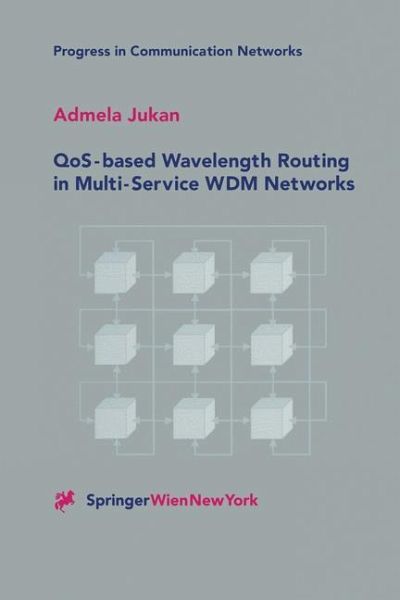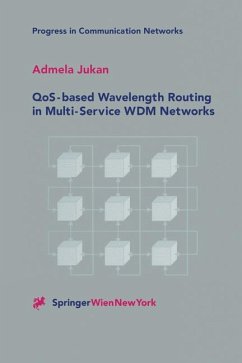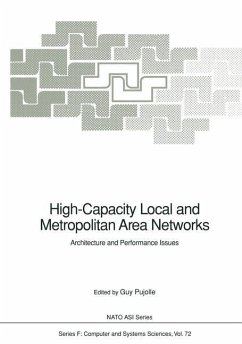
QoS-based Wavelength Routing in Multi-Service WDM Networks
Versandkostenfrei!
Versandfertig in 1-2 Wochen
106,99 €
inkl. MwSt.
Weitere Ausgaben:

PAYBACK Punkte
0 °P sammeln!
This book focuses on methods for service-differentiated and constraint-based wavelength routing and resource allocation for multi-service WDM networks, tailored at needs of specific network users and adaptable to services yet to emerge. A number of unique routing solutions are proposed, and an extensive analysis of dynamically re-configurable multi-service WDM networks impart the major contribution to the current efforts in standardisation and network operation, and give an inimitable motivation for further study and research.
The need to establish wavelength-routed connections in a service-differentiated fash ion is becoming increasingly important due to a variety of candidate client networks (e. g. IP, SDH/SONET, ATM) and the requirements for Quality-of-Service (QoS) de livery within transport layers. Up until now, the criteria for optical network design and operation have usually been considered independently of the higher-layer client signals (users), i. e. without taking into account particular requirements or constraints originating from the users' differentiation. Wavelength routing for multi-service net works with performance guarantees, however, will have to do with much more than finding a path and allocating wavelengths. The optimisation of wavelength-routed paths will have to take into account a number of user requirements and network con straints, while keeping the resource utilisation and blocking probability as low as pos sible. In a networking scenario where a multi-service operation inWDM networks is assumed, while dealing with heterogeneous architectures (e. g. technology-driven, as transparent, or regenerative), efficient algorithms and protocols for QoS-differentiated and dynamic allocation of physical resources will playa key role. This work examines the development of multi-criteria wavelength routing for WDM networks where a set of performances is guaranteed to each client network, taking into account network properties and physical constraints.














